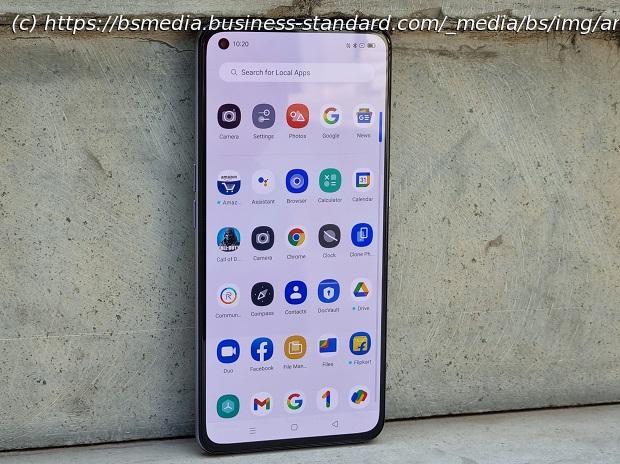Read more about Realme X7 Pro 5G review: Thin and lightweight premium-midrange smartphone on Business Standard. Business Standard took the Realme X7 Pro out for a spin and tested the phone’s performance in real-life scenario. Here is how it fared on key parameters
If early smartphone market trends are anything to go by,2021 is going to be the year of In the midrange segment, Xiaomi and OPPO have already taken the early lead with the launch of the Mi 10i (review) and the Reno 5 Pro (review), respectively. Next in line is another Chinese smartphone brand, Realme, which has recently launched not one but two 5G under its X-series line-up. Named the X7 and X7 Pro, the former is price-wise more accessible and the latter a premium-midrange smartphone. Business Standard took the X7 Pro out for a spin to test the phone’s performance in real-life scenarios. Here is how it fared on key parameters: The Realme X7 Pro looks similar to the Realme 7 Pro (review) in more ways than one. But it has new colour themes, including a special edition (review unit) named ‘Fantasy’ with ‘Dare to Leap’ subtly engraved on its reflective back cover. If not up to your liking, you can ditch the Fantasy colour variant for the regular version available in mystic black colour. Both colour variants feature a frosted finish on the back cover to aid the phone’s in-hand feel and protects it against scratches and smudges. The Realme X7 Pro is thin (8.5mm), lightweight (184g) and compact, something that Realme’s previous-generation premium midrange lacked. Even outside the Realme circles, there are only a handful of premium-midrange smartphones that match the comfortable ergonomics of the Realme X7 Pro. That said, the phone offers a good in-hand feel and it is easy to hold and operate. The Realme X7 Pro has a 6.55-inch super AMOLED screen of the fullHD+ resolution,120Hz refresh rate,240Hz touch sampling rate, and up to 1200 nits of peak brightness level. The screen has Gorilla Glass 5 layered on top for protection against scratches and smudges. It is a flat display with top-left-aligned punch-hole for the front camera. The screen has thin bezels around it and the otherwise prominent one on the chin is fairly slim too. The punch-hole on the screen is neither small nor too big. Interestingly, the front camera module seems tiny but the black ring around it to filter screen light is thick, stretching the screen punch-hole wide. Nevertheless, the screen is bright, vivid and responsive. It can be set to refresh at 60Hz and 120Hz rate. There is also an auto mode, which automatically switches between 60Hz and 120Hz based on the on-screen content requirement. However, when set to auto setting for refresh rate, the screen tends to stutter in some apps (Gmail, Google News, Twitter, Instagram). On the positive side, the auto setting for refresh rate ups the on-battery life by a lot. Speaking of battery efficiency, you get the best on-battery time with the screen set to 60Hz refresh rate. At 120Hz refresh rate, the battery efficiency drops, but not significantly. In both the available refresh rates, however, the experience is smooth. From smooth UI movements to swift transition and quick scrolling, there is no way one finds it wanting in smoothness. Complementing the display is its always-on mode, which shows time, date and other relevant information on the phone’s locked screen.






